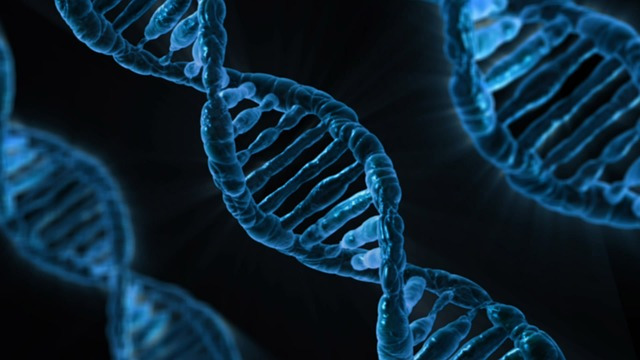The Power of DNA in Biotechnology

Since the discovery of DNA structure by James Watson and Francis Crick in 1953, the study of DNA has revolutionized the field of biotechnology. From gene editing to personalized medicine, DNA has become a fundamental tool for scientists and researchers to explore and manipulate living systems.
This blog post aims to provide an overview of how DNA is used in biotechnology. It will cover the historical background of DNA research, the different applications of DNA in biotechnology, and the future of DNA technologies. By the end of this post, you will better understand the power of DNA and its importance in shaping the future of biotechnology.
Contents
What is DNA?
DNA, or deoxyribonucleic acid, is a molecule that carries genetic information in all living organisms. It consists of a long chain of nucleotides, which are the building blocks of DNA. Each nucleotide contains a phosphate group, a sugar molecule, and a nitrogenous base, which can be adenine (A), thymine (T), guanine (G), or cytosine (C).
The sequence of these four nitrogenous bases in DNA determines an organism’s genetic code, which controls the production of proteins and other molecules necessary for life. This genetic code is passed down from parent to offspring during reproduction and is responsible for the inheritance of traits.
The Importance of DNA in Biotechnology
In biotechnology, DNA is essential because it can be manipulated and modified to create new biological systems, organisms, and products. For example, scientists can use DNA editing techniques like CRISPR-Cas9 to modify an organism’s genetic code, allowing them to eliminate or add specific traits. DNA sequencing technology allows scientists to read and analyze an organism’s genetic code, which is crucial for personalized medicine and genetic testing.
DNA is an essential tool in biotechnology, allowing scientists to explore and manipulate living systems in previously impossible ways. Its importance lies in its ability to store and transmit genetic information, which is the foundation of all biological processes.
Let’s take a closer look at some of the use cases of DNA in biotechnology.
Gene Editing
Gene editing is a biotechnology technique that involves changing an organism’s genetic material, typically DNA, to modify its traits or functions. DNA is crucial in gene editing, as it contains the genetic information that determines an organism’s traits and functions.
Several techniques are used for gene editing, including CRISPR-Cas9, zinc-finger nucleases (ZFNs), and transcription activator-like effector nucleases (TALENs). These techniques work by introducing specific changes to the DNA sequence, such as deleting, adding, or replacing specific nucleotides.
The role of DNA in gene editing is essential, as it provides the blueprint for an organism’s genetic code. Scientists can use gene editing to modify specific genes associated with certain traits or diseases, allowing them to eliminate or add specific traits. For example, gene editing can create crops more resistant to pests and diseases or develop new treatments for genetic diseases by correcting or replacing faulty genes.
DNA sequencing technology is also an essential tool in gene editing, as it allows scientists to read and analyze an organism’s genetic code. This information can be used to identify specific genes associated with certain traits or diseases and develop strategies for modifying them.
Overall, gene editing is an important technique in biotechnology that relies heavily on the properties of DNA. By modifying an organism’s genetic code, gene editing offers the potential to develop new treatments for diseases, improve crop yields, and address various other challenges facing society today.
Synthetic Biology
Synthetic biology is a field of biotechnology that involves the design and construction of new biological systems, organisms, or products that do not exist in nature. DNA plays a crucial role in synthetic biology, as it provides the blueprint for an organism’s genetic code.
In synthetic biology, scientists can manipulate and engineer DNA to create new biological systems or organisms with specific functions or properties. For example, DNA can be designed and synthesized to create new genes or gene circuits that control the expression of specific proteins or other molecules. These gene circuits can be used to create biological systems that perform specific tasks, such as sensing and responding to environmental stimuli.
DNA can also be used in synthetic biology to create new organisms, such as bacteria or yeast, engineered to produce specific products, such as biofuels or pharmaceuticals. Scientists can modify the genetic code of these organisms to enhance their ability to produce these products or to create new metabolic pathways that allow them to produce entirely new products.
In addition to its use in creating new biological systems and organisms, DNA is also important in synthetic biology for its role in DNA sequencing and analysis. DNA sequencing technology allows scientists to read and analyze an organism’s genetic code, which is crucial for understanding how biological systems function and designing new biological systems.
DNA is a crucial component of synthetic biology, providing the foundation for designing and constructing new biological systems and organisms. By manipulating and engineering DNA, scientists can create biological systems and organisms with specific functions or properties, addressing society’s challenges.
Personalized Medicine
Personalized medicine is a rapidly growing field that aims to provide medical treatments tailored to individual patients, considering their unique genetic and biological characteristics. DNA plays a critical role in personalized medicine. It contains the genetic information that determines an individual’s traits, including their predisposition to certain diseases and their response to different treatments.
One of the primary uses of DNA in personalized medicine is genetic testing, which can identify specific genetic mutations or variations associated with an increased risk of certain diseases. For example, genetic testing can identify mutations in the BRCA1 or BRCA2 genes associated with an increased risk of breast and ovarian cancer, allowing individuals to take preventative measures, such as increased screening or prophylactic surgery.
DNA is also important in personalized medicine for its role in pharmacogenomics, which involves studying how an individual’s genetic makeup affects their response to different medications. By analyzing an individual’s DNA, doctors can identify genetic variations that may impact their ability to metabolize or respond to certain medications. This information can be used to tailor treatment plans, selecting medications that are more likely to be effective and avoiding those that may cause adverse effects.
In addition to its use in genetic testing and pharmacogenomics, DNA is also essential in personalized medicine for its role in precision oncology. Precision oncology involves using genomic testing to identify specific genetic mutations or alterations in tumors, allowing doctors to tailor treatment plans based on the tumor’s unique characteristics. For example, genomic testing can identify mutations in the EGFR gene associated with certain types of lung cancer, allowing doctors to select targeted therapies that specifically inhibit this gene.
DNA plays a critical role in personalized medicine, providing important information about an individual’s genetic makeup that can be used to tailor medical treatments to their unique biological characteristics. By leveraging this information, personalized medicine offers the potential to improve patient outcomes and provide more effective and targeted treatments for a range of diseases.
Forensic Science
Forensic science is a field that involves the application of scientific methods to investigate and solve crimes. DNA is a critical tool in forensic science, as it contains unique genetic information that can be used to identify individuals and link them to crime scenes.
One of the primary uses of DNA in forensic science is in DNA profiling, which involves analyzing specific regions of an individual’s DNA to create a genetic profile that is unique to that individual. This genetic profile can then match DNA evidence found at a crime scene to a suspect or victim or eliminate individuals from consideration.
DNA profiling relies on the fact that some areas of an individual’s DNA are highly variable between individuals, with specific sequences of nucleotides unique to each person. By analyzing these regions, forensic scientists can create a genetic profile that is highly specific to that individual, with a probability of a match in the general population that is extremely low.
In addition to DNA profiling, DNA is also essential in forensic science for its use in DNA sequencing and analysis. DNA sequencing technology allows forensic scientists to analyze an individual’s entire genome, providing more detailed information about their genetic makeup that can be used to identify them or link them to a crime scene.
DNA can also be used in forensic science to determine other characteristics of an individual, such as their ancestry or physical traits. For example, DNA analysis can determine an individual’s hair or eye color or identify genetic markers associated with certain ethnic or racial groups.
DNA is a vital tool in forensic science, providing important information that can be used to identify individuals and link them to crime scenes. By leveraging DNA profiling, DNA sequencing, and other DNA analysis techniques, forensic scientists can provide valuable evidence in criminal investigations, aiding the pursuit of justice and protecting public safety.
Conclusion
DNA is a fundamental component of biotechnology with a broad range of applications across various industries. DNA’s versatility and specificity allow for precise manipulation, modification, and identification of genetic material, leading to revolutionary advancements in medicine, agriculture, environmental science, and forensics.
The blog post covered various aspects of DNA in biotechnology, including gene editing, synthetic biology, personalized medicine, forensic science, and future applications. It is evident that DNA has played a significant role in these fields, and as technology continues to evolve, its potential applications in biotechnology are limitless.
In the future, DNA-based technologies could lead to further advancements in the fields of gene therapy, agricultural biotechnology, personalized nutrition, environmental monitoring, and artificial intelligence.
Studying DNA and its applications in biotechnology is an exciting and rapidly evolving field that offers many opportunities for innovative solutions to real-world problems. It is vital that we continue to invest in research and development in this area to unlock the full potential of DNA in biotechnology.
Frequently Ask Questions
What is the importance of DNA in biotechnology?
Importance. DNA serves as the basic blueprint for all life and is a significant determinant of how the body operates and the course of the disease, making it essential to biotechnology and medicine.
What is the purpose of DNA technology?
In biology, recombinant DNA technology is a crucial research tool. It enables the manipulation of DNA fragments for laboratory research. A fragment of DNA is inserted into a bacterial or yeast cell using a number of scientific techniques.





